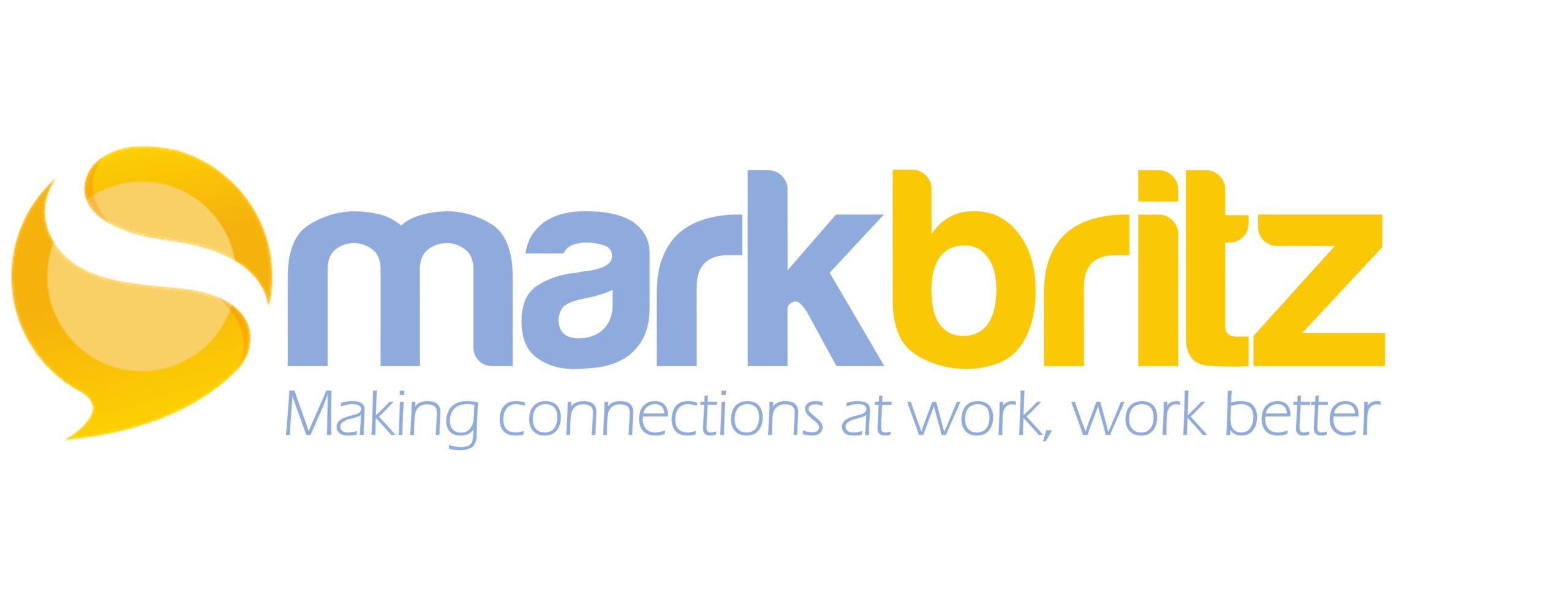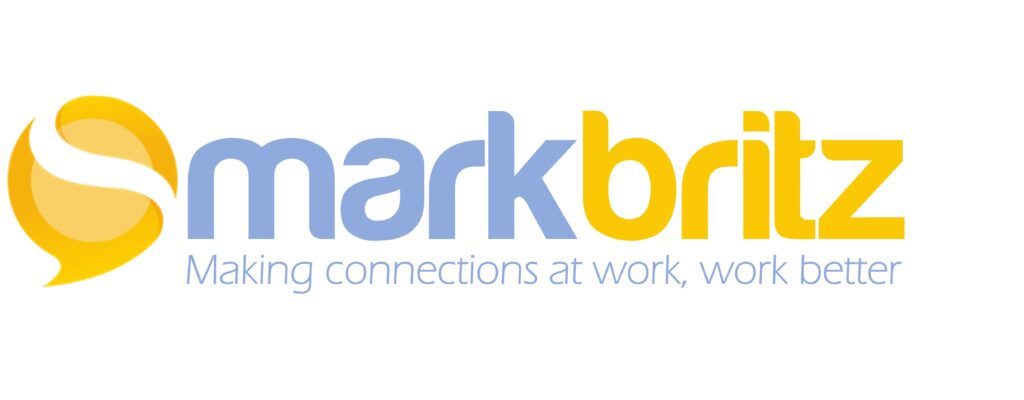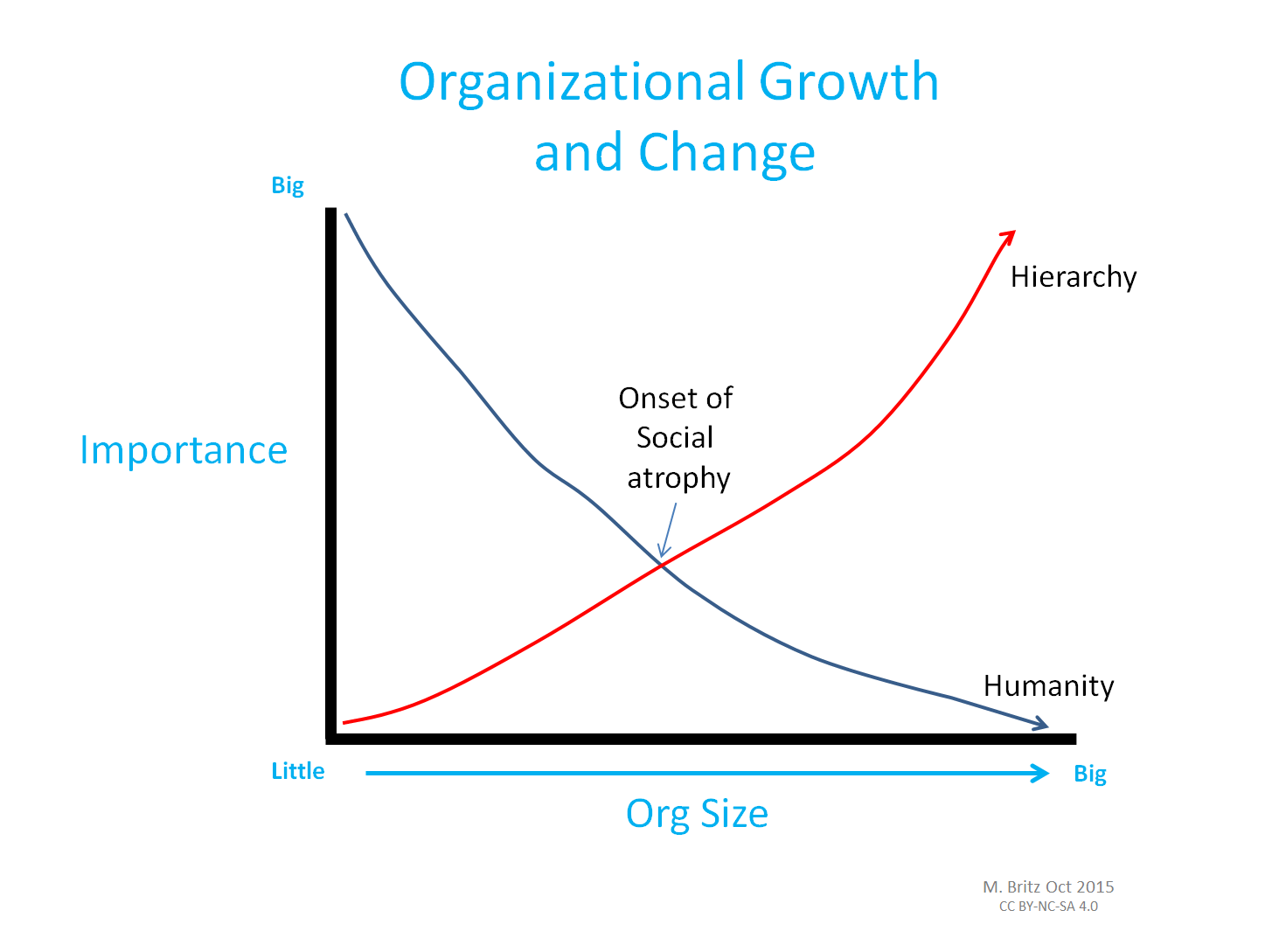When I’ve see social collaboration happening, and I mean really happening, it’s been in small pockets within organizations. Tools aside, the trust, cooperation, collaboration and budding sense of community (what is often desired for the entire organization) happens around specific work “objects”. Strong connections without a doubt developed around a common purpose – brothers in arms if you will. The further away from this object, the weaker the trust, cooperation, collaboration and community.
When an organization is small, just starting out there is an all hands on deck attitude everyone is involved around the work object. The founder, the engineer, the marketing people, the designer are all fighting for a common, very visible purpose. Nobody is thinking title, division of labor, or making bonus. Everyone chips in everywhere, this is High Social. So with that thought, I sketched out a crude line graph that you see here (now a bit less crude). My belief at the moment was that as an organization grows, layers form, distance is created, barriers with hierarchy appear, communication deteriorates, transparency is clouded, and openness closes. It happens subtly, without fanfare or justification. The prevailing belief is that an organization that goes from 5 to 5000 people requires infrastructure, departments, pecking orders, leaders and followers. This is old world thinking though and it’s not completely correct. But I’m not completely correct in my thinking either.
First, why this is old world thinking and it’s wrong. Simply put it is the Industrial era model; roles, division of labor, management, etc. In more agile organizations today roles change based on need, talent and interest, silo’d work groups (departments) are considered dangerous to growth, and management is mostly an individual’s expectation. The greater part of this new model is driven by social technology that enables all to see the machinery and contribute across hierarchy. Email played it’s part early on where people could say and be heard by a few. Later, platforms and tools (more open in nature) allowed many to do the same but be able to speak to many and be heard by all (if they wanted to listen). In a nutshell we have the technology today to allow a company of 5000 to communicate as easily as one of 5.
After I sketched this line graph I realized I was a bit off regarding organizational size. I do still think its likely when an organization grows, the humanity it had declines as hierarchy rises but that is not the complete story. Plenty of organizations remain small, 20-30 people, and yet distance is created between them over time by choice. But not a choice based on a desire to advance dehumanizing infrastructure, rather it’s a choice to forego adopting new models and allowing the old world model of “what should be” to devour “what is“. It’s learned helplessness on a larger scale as founders subconsciously subscribe to the current paradigm of business as usual, even in tiny organizations. These same founders turned Presidents can see the changes the social web is making to their marketing efforts, to consumer behaviors, and to their competitors growth. Outside their “walls” the world continually transforms and yet inside it remains status quo.
This seems somewhat hypocritical to me, and in the social age hypocrisy leads ultimately to instability.


